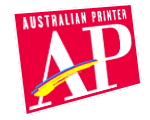KKR is the company behind the purchase, receivership, and possible debt-free repurchase of the nation's biggest sheetfed printer and it has a long history in the heady world of financial engineering.
With US$75bn of funds in its portfolio and a profit last year of US$560m KKR is a serious business, however its methods for growth can be controversial.
Founded in 1976 KKR first shot to prominence in the 1980s with the unsolicited leveraged buyout of RJR Nabisco, the giant US tobacoo and biscuit company.
At US$31bn the RJR Nabisco leveraged buyout was the biggest of the unbridled days of 1980s finance. KKR's formula was straightforward: have management borrow money against the assets and cash flow of a company, and use that money to buy a controlling stake of it. The process leaves the companies weighted with crushing debt loads, which was thought to be a good thing as it prevented management from embarking on wild spending sprees and ensured strict financial discipline (conversely, it also limited innovation and growth). Through a combination of cutting costs, selling assets and paying down debt, the now private firm could be brought public again, at a higher valuation, making a small (or large) fortune for the management team – and, of course, for KKR.
The RJR Nabisco leveraged buyout was, at the time, widely considered to be the pre-emininent example of corporate and executive greed.
The ambitious Ross Johnson had been made president and CEO of RJR Nabisco tin 1986 and had already moved the company's HQ from a small Wyoming town to nouveau riche Atlanta.
At the time of the leveraged buyout, 1988, Henry Kravis was - as he still is - the managing partner at Kohlberg Kravis Roberts & Co, a finance business he set up with his cousin and their mentor Jerome Kohlberg. The two younger partners allegedly pushed Kohlberg out of the firm in 1987.
Johnson from RJR Nabisco and Kravis from KKR were initially to be partners in what was to be a massive deal for both of them, but Johnson tuned away from Kravis and hired another Wall St outfit, a division of American Express, to work with. Kravis then decided to make his own play and the stage was set for a battle between the two sides. The leveraged buyout for around US$31bn, and the battle for control, took place between October and November 1988.
Once battle began a frenzied bidding war involving nearly all of Wall Street's private equity players kicked off. The battle ended with KKR facing off against the RJR management, headed by Johnson, who stood to personally make US$100m from the deal, prompting a Time magazine cover with his face on it and the headline A Game of Greed. Johnson's final bid was higher at US$112 a share to KKR's US$109. However KKR prevailed as the RJR Board didn't trust Johnson to come through with the cash, although Johnson received the not insignificant sum of US$60m in compensation.
Following these shenanigans the leveraged buyout became an acceptable part of the financial world, thanks to its ability to deliver windfalls to financiers for virtually no risk to themselves, and KKR went on to win a reputation as the junk bond kings of Wall Street. Many of the world's largest companies have been subject to LBOs including Hertz Rent A Car, Toys 'R' Us, film studio MGM and the world's biggest and richest soccer club Manchester United.
Investigative journalists Bryan Burrough and John Helyar published a book of the RJR Nabisco tale; Barbarians at the Gate: the Fall of RJR Nabisco, which was later turned into a telemovie for HBO.
These days two thirds of KKR's business is still in leveraged buyouts, but the company which once required investors to have a minimum US$10m to hand over, is now courting the US equivalent of self managed super funds, known as 401s, which is where much of the US pension fund money is now going.
Click here for more Geon stories on i-grafix







